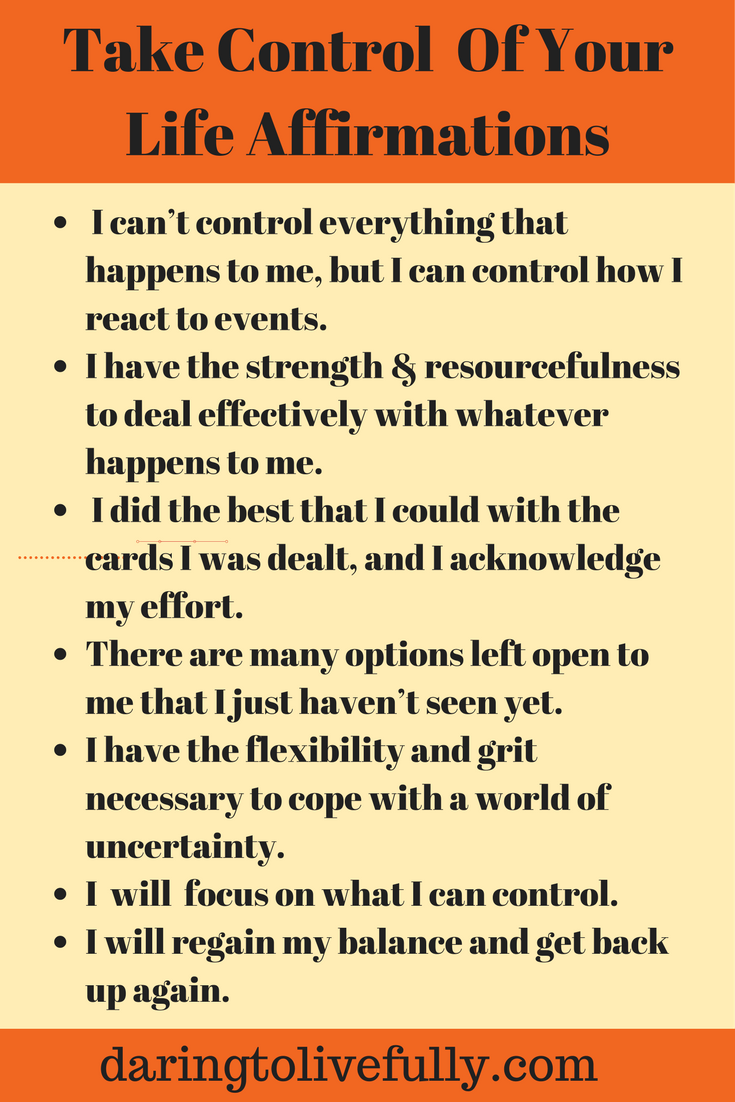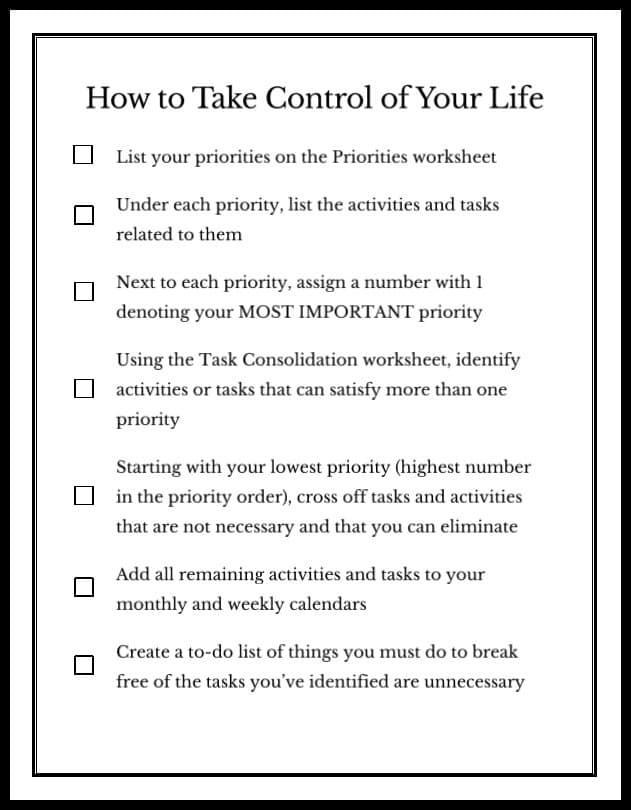How To Start Taking Control Of Your Life

The aroma of freshly brewed coffee hung in the air, a comforting counterpoint to the anxious energy swirling within Sarah. Deadlines loomed at work, bills piled on the kitchen counter, and the once-thrilling spark in her relationship had dimmed to a flicker. She felt adrift, a passenger in her own life, watching the scenery blur by without a hand on the wheel. Today, however, was different. Today, Sarah decided to reclaim the driver's seat.
Taking control of your life isn't about achieving perfect order or eliminating challenges. It's about consciously choosing your path and actively shaping your experiences, even amidst the inevitable chaos. It's a process of self-discovery, empowerment, and aligning your actions with your values.
Understanding Your "Why"
The journey begins with introspection. What truly matters to you? What are your core values? According to a study by the Values in Action (VIA) Institute on Character, understanding and leveraging your strengths is a key component of well-being. Identifying these values provides a compass, guiding your decisions and actions towards a more fulfilling life.
Consider journaling or practicing mindfulness to connect with your inner self. Ask yourself: What brings me joy? What am I naturally good at? What kind of impact do I want to make on the world?
Setting Meaningful Goals
Once you have a clearer understanding of your values, it's time to set meaningful goals. But not just any goals – SMART goals. These are Specific, Measurable, Achievable, Relevant, and Time-bound.
Instead of a vague aspiration like "get healthy," try "walk for 30 minutes, three times a week." Small, achievable steps build momentum and foster a sense of accomplishment, fueling your motivation.
Breaking Free from Limiting Beliefs
Often, the biggest obstacles to taking control are the limiting beliefs we hold about ourselves. These are the negative narratives that whisper doubts and fears, preventing us from pursuing our dreams.
Challenge these beliefs by asking yourself: Is this thought actually true? What evidence do I have to support it? What would I do if I didn't believe this?
Embracing Imperfection and Resilience
Life is inherently messy. There will be setbacks, detours, and unexpected challenges. The key is not to avoid these obstacles, but to develop resilience – the ability to bounce back from adversity.
According to the American Psychological Association, resilience is built through strong social connections, practicing self-care, and maintaining a positive outlook. Remember that setbacks are opportunities for growth and learning.
Building Healthy Habits
Small daily habits can have a profound impact on your overall well-being. Prioritize sleep, nutrition, and physical activity. "The Power of Habit," by Charles Duhigg, highlights how understanding the habit loop (cue, routine, reward) can help you create positive change.
Even simple habits like drinking more water, meditating for five minutes a day, or spending time in nature can significantly improve your mood and energy levels. Start small and gradually build upon your successes.
Cultivating Strong Relationships
Human connection is essential for well-being. Nurture your relationships with family, friends, and loved ones. Make time for meaningful conversations, shared experiences, and acts of kindness.
Dr. Brené Brown, a renowned researcher on vulnerability and connection, emphasizes the importance of authenticity in relationships. "Owning our story and loving ourselves through that process is the bravest thing that we’ll ever do," she says.
Taking Action, One Step at a Time
The most important step is to simply begin. Don't wait for the perfect moment or for all the answers to be clear. Start with one small, manageable action that aligns with your values and goals.
Maybe it's writing a letter to a loved one, signing up for a class, or simply decluttering your workspace. Each small victory builds momentum and empowers you to take on bigger challenges.
Sarah, sipping her coffee, opened her laptop. She didn't have all the answers, but she had a plan. She scheduled a coffee date with a friend, signed up for a yoga class, and started brainstorming ways to streamline her workflow. It was a small start, but it was a start. She was taking back control, one sip, one stretch, one step at a time. The feeling of being in the driver’s seat, even just a little, was exhilarating.


















